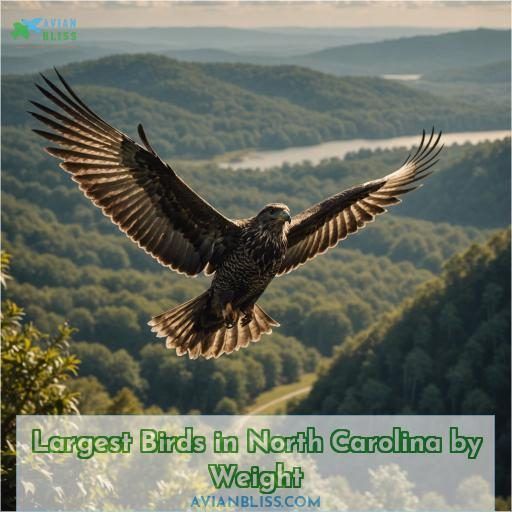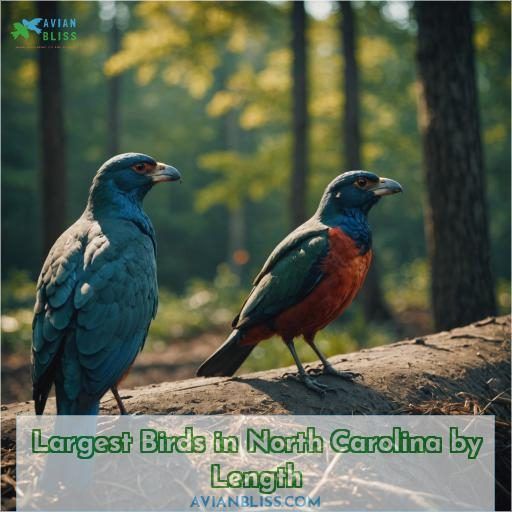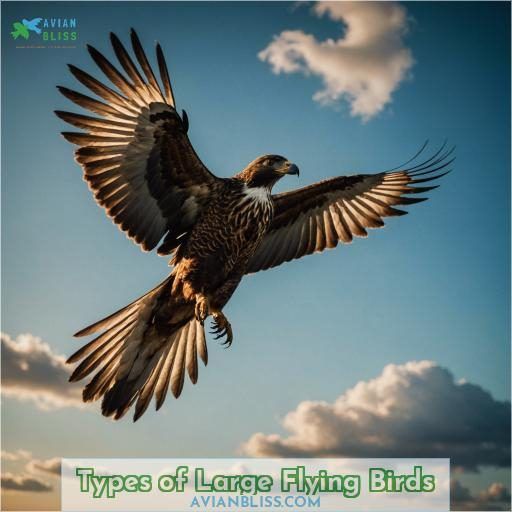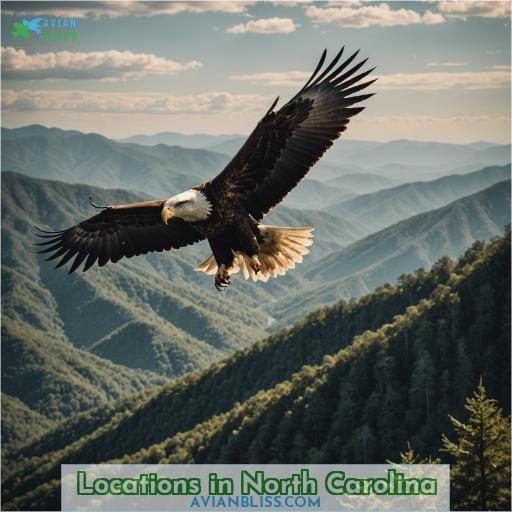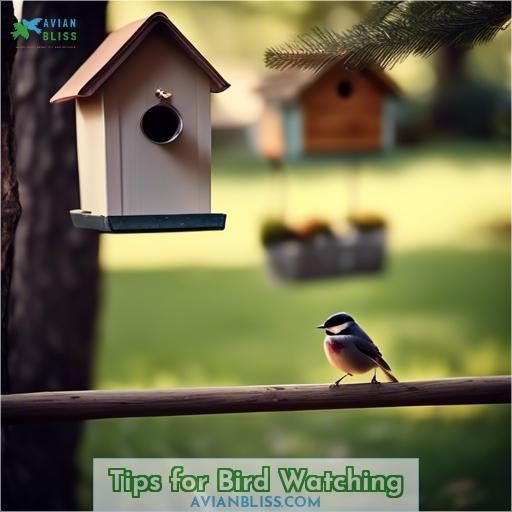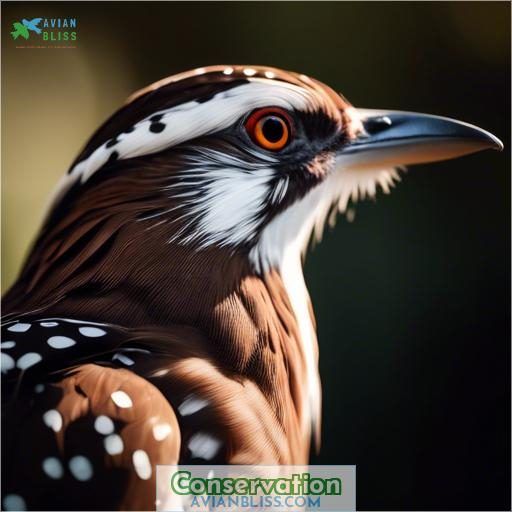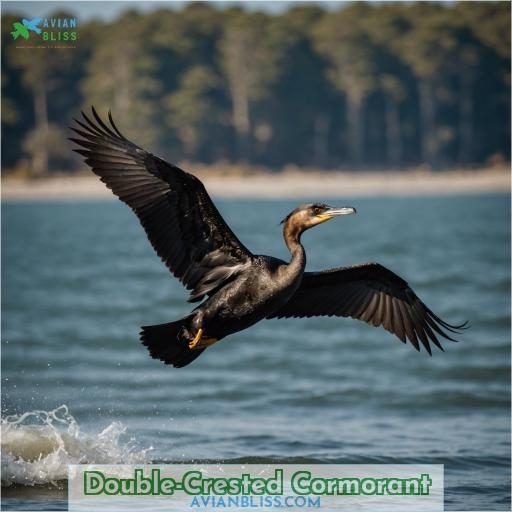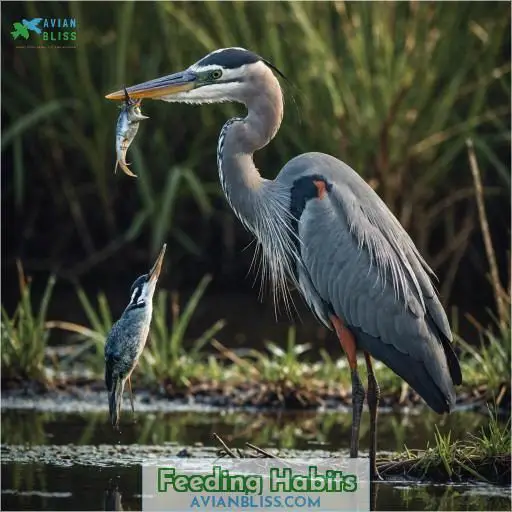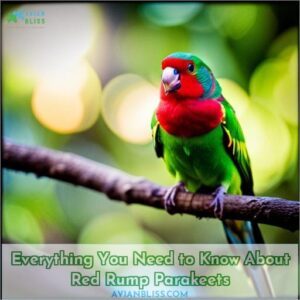This site is supported by our readers. We may earn a commission, at no cost to you, if you purchase through links.
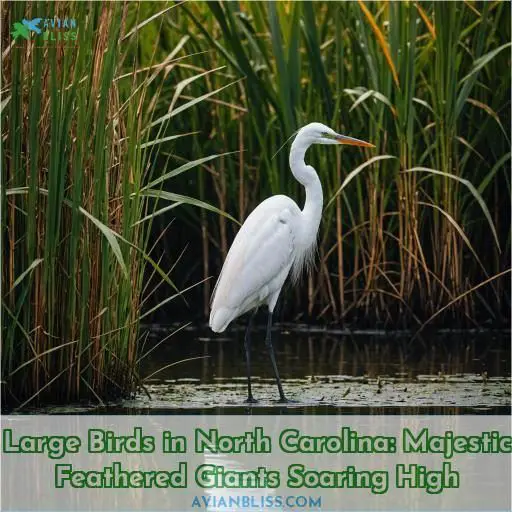
North Carolina boasts an impressive array of large avian residents and seasonal visitors. From the majestic bald eagles soaring over Jordan Lake to the graceful great blue herons wading through the Alligator River National Wildlife Refuge, the state is a haven for nature enthusiasts to witness these large birds in their natural habitats.
Whether it’s the powerful ospreys diving for fish along the Cape Hatteras National Seashore or the vibrant turkey vultures circling the Uwharrie National Forest, North Carolina’s diverse landscapes provide ample opportunities to observe these feathered giants in all their splendor.
To further explore the fascinating world of these large birds, immerse yourself in the rich tapestry of North Carolina’s avian wonders.
Table Of Contents
- Key Takeaways
- Largest Birds in North Carolina by Weight
- Largest Birds in North Carolina by Length
- Largest Birds in North Carolina by Wingspan
- Types of Large Flying Birds
- Locations in North Carolina
- Optimal Viewing Conditions
- Tips for Bird Watching
- Conservation
- Double-Crested Cormorant
- Feeding Habits
- Frequently Asked Questions (FAQs)
- What are the best times of the day for birdwatching in North Carolina?
- How can I identify different bird species in North Carolina?
- What are the most common bird species in North Carolina?
- Where are the best locations for birdwatching in North Carolina?
- How can I get involved in bird conservation efforts in North Carolina?
- Conclusion
Key Takeaways
- North Carolina is home to a diverse array of large avian residents and seasonal visitors, including bald eagles, great blue herons, ospreys, and turkey vultures.
- The largest birds in North Carolina by weight include the mute swan, trumpeter swan, wild turkey, American white pelican, and Canada goose.
- The largest birds in North Carolina by length are the great blue heron and brown pelican, both of which can reach impressive heights.
- Conservation efforts are in place to protect these large birds and their habitats, and it is essential to report sightings online and participate in community science projects to support species protection efforts.
Largest Birds in North Carolina by Weight
You’ll be awed by the colossal size of the largest birds found in North Carolina when measured by weight.
These avian giants tower above their feathered kin.
The Mute Swan leads the pack at a staggering 416 ounces.
The Trumpeter Swan follows closely at 401.6 ounces.
The formidable Wild Turkey weighs 381 ounces.
The American White Pelican weighs 246.4 ounces.
The Canada Goose rounds out the top five at 230.1 ounces.
Mute Swan
The Mute Swan is a non-native species in North Carolina, but its elegant appearance makes it a popular sight.
It’s one of the largest and heaviest flying birds, weighing in at 23 pounds.
This bird is entirely white, with long, graceful necks, orange bills with a large, black basal knob, black around the base of the bill, and black legs.
Adults look alike, although males are larger than females.
The Mute Swan shares the wetlands with other large birds like the Great Blue Heron, Great Egret, Brown Pelican, and American White Pelican.
Trumpeter Swan
The Trumpeter Swan, a native of North America, is an impressive sight to behold.
With its long neck and tail, this bird is one of the largest waterfowl species.
Trumpeter Swans are known for their breeding habits, which involve building nests near water sources.
Conservation efforts have been put in place to protect this species, with future prospects looking promising.
As one of the largest birds in North America, the Trumpeter Swan is a true majestic feathered giant soaring high.
Wild Turkey
In the dense forests of North Carolina, the wild turkey reigns supreme.
Tipping the scales with a hefty weight that commands respect.
During mating season, their elaborate dances and powerful gobbles echo through the woods.
A true spectacle of nature’s rhythm.
Despite past threats from hunting, conservation efforts have bolstered their numbers.
Ensuring these majestic birds continue to thrive alongside their nemesis, the great horned owl.
American White Pelican
Explore the majestic world of American White Pelicans as they soar through the skies of North Carolina. These magnificent birds are one of the largest in North America, with a wingspan of up to 9 feet and a length of about 5 feet. During the breeding season, their bills turn bright orange, and they form large, dense colonies on islands in freshwater lakes and rivers.
American White Pelicans are highly gregarious birds that nest in large, densely populated colonies. They’re sensitive to human disturbance, which can expose their eggs and young to predators and temperature stress. Their diet consists mainly of small fish with little commercial value, as well as salamanders and crayfish. During the winter, they can be found in warm, coastal marine habitats such as protected bays and estuaries.
These birds are known for their cooperative foraging, where they circle around fish or drive them in the direction of the shore for easier catch. They scoop up prey by dipping their bills in the water, and food is swallowed for transport, not carried in the pouch. During the breeding season, adults often forage at night, and flocks flying in formation are an impressive sight as they circle downward on set wings from great heights.
American White Pelicans are listed as an endangered species in Washington due to habitat destruction and human disturbance of breeding colonies. They’re also sensitive to climate change, with flooding and drought being recurrent problems. To protect these birds, it’s essential to avoid disturbing their nesting sites and work towards preserving their habitats.
Join the journey of the American White Pelican as they gracefully navigate the skies of North Carolina, providing a glimpse into the wonders of nature’s largest flying birds.
Canada Goose
Canada geese are a spectacular sight to witness in North Carolina.
These large birds have distinctive honks and graceful flight patterns.
They favor habitats near water.
Canada geese can be found in various locations, from parks to wetlands.
During migration, they travel in large groups.
They form a characteristic ‘V’ pattern.
Conservation efforts, such as hunting regulations and habitat preservation, are vital for their survival.
Join the ranks of bird enthusiasts and learn more about these fascinating creatures.
Largest Birds in North Carolina by Length
You’ll encounter two prominent avian species when observing North Carolina’s largest birds by length – the majestic Great Blue Heron, standing tall at 52 inches, and the striking Brown Pelican, spanning an impressive 50 inches. These elongated feathered giants command attention with their impressive stature, gracefully soaring through the state’s diverse ecosystems.
Great Blue Heron
The Great Blue Heron is a large bird native to North Carolina. Known for its striking blue-gray feathers and long, slender legs, it’s the largest heron species in the state.
With a length of up to 52 inches and a wingspan of 96 inches, these birds can be found in various habitats. Such habitats include wetlands, marshes, and along the coast.
They’re opportunistic feeders, consuming a wide range of prey. This prey includes fish, amphibians, and reptiles.
Great Blue Herons are migratory, traveling between their breeding grounds in the north and their wintering grounds in the south. They can often be spotted near bald eagles, ospreys, and black vultures, sharing similar hunting grounds and feeding habits.
Brown Pelican
The Brown Pelican is another fascinating bird species found in North Carolina.
With a length of 50 inches, it’s one of the largest birds in the state.
These birds are known for their unique migration patterns, traveling in large groups called flocks and forming a characteristic ‘V’ pattern.
They have a distinct physical appearance, with a large, dark bill and webbed feet.
Their habitat preferences include sandy beaches and rocky shores, and conservation efforts are in place to protect their populations.
Other large birds in North Carolina include the Sandhill Crane, Turkey Vulture, Gyrfalcon, Pileated Woodpecker, and Bald Eagles.
Largest Birds in North Carolina by Wingspan
You’ll be awestruck by the majestic wingspans of the bald eagle and golden eagle, two of the largest birds found in North Carolina. The bald eagle, with its impressive 96-inch wingspan, soars gracefully through the skies, while the golden eagle, also boasting a 96-inch wingspan, navigates the air currents with remarkable agility and precision.
Bald Eagle
The Bald Eagle, a majestic bird with a wingspan of 66 to 96 inches, is a sight to behold in North Carolina. These birds of prey are known for their incredible hunting prowess and are often seen near bodies of water, where they scavenge for carrion or prey on other animals. The Bald Eagle population in North Carolina has been on the rise, with nests being found in most counties, thanks to conservation efforts and the protection of their habitat.
These eagles are apex predators, but they still face challenges from habitat loss, illegal poaching, and pollution. However, initiatives are underway to safeguard and restore their populations in the state. The Bald Eagle Protection Act, first passed in 1940, prohibits the selling, killing, or possession of any part of the bird, including feathers, talons, or eggs.
Bald Eagles are also known to feed on other animals, such as fish, and they’ll scavenge on carcasses or gut piles, sometimes ingesting lead from bullet fragments. Hunters can help protect these birds by switching to non-lead ammunition, which is safer for both the eagles and other scavengers.
If you’re lucky enough to spot a Bald Eagle in North Carolina, remember to respect their habitat and keep a safe distance. Stay at least 1,000 feet from the nest, use binoculars or a spotting scope to get a closer look, keep noise down, avoid sudden movements, and don’t flush a bird from its nest.
Golden Eagle
Explore the majestic world of the Golden Eagle, one of the largest birds in North Carolina by wingspan. With a wingspan of 72.8-86.6 inches (185-220 cm), this bird is a sight to behold. Golden Eagles are native to the western great plains and are known for their long legs, which provide them with a unique hunting advantage. These birds of prey are migratory, traveling between their wintering and breeding grounds, and are known to nest on cliffs and steep escarpments in grassland, chaparral, shrubland, forest, and other vegetated areas.
Golden Eagles are apex predators, hunting a variety of prey, including rabbits, hares, ground squirrels, and prairie dogs. They’re known to use their powerful talons to capture prey on the ground from a low flight, but are also capable of taking birds on the wing. These birds are known to mate for life and build large nests of sticks, lined with weeds, grass, leaves, and moss.
If you’re interested in bird watching, Golden Eagles can be found in North Carolina during their migration, particularly in the spring and fall. To enhance your bird watching experience, consider using a field guide, selecting binoculars, identifying birds, reporting sightings online, and participating in community science projects. By following these tips and being mindful of conservation efforts, you can help protect and conserve these magnificent birds.
Types of Large Flying Birds
You’ll witness bald eagles, with their distinctive white heads and powerful wings, soaring effortlessly above North Carolina’s lakes and forests.
Turkey vultures, with their large wingspans, circle gracefully on thermal air currents as they scan for carrion below.
Ospreys, remarkable fish-eaters with sharp talons, plunge from great heights to snatch their slippery prey from the state’s coastal waters.
Red-tailed hawks, identifiable by their rust-colored tail feathers, hover vigilantly, scrutinizing the ground for rodents and other small creatures.
The great blue heron, a towering wading bird, slowly beats its broad wings as it navigates wetlands and shorelines in search of fish, frogs, and crustaceans.
Bald Eagles
As we penetrate deeper into North Carolina’s realm of large soaring birds, let’s investigate the majestic bald eagle. Renowned for their white heads and expansive wingspan, bald eagles are a spectacle to witness. Here’s what you should understand:
- Conservation: Bald eagles are sheltered under the Endangered Species Act.
- Optimal Viewing: Best observed during migration seasons.
- Migration Patterns: Migrate along the Atlantic coast.
- Physical Characteristics: Vast wings for long-haul flight and robust feet for transporting food and sticks.
- Breeding Habits: Nest in towering trees near water bodies.
Turkey Vultures
Turkey vultures are fascinating birds known for their unique characteristics and behaviors. These vultures are easily recognizable by their featherless red heads, which resemble those of turkeys, hence their name. They’re large birds, with a wingspan of up to six feet and a length of 27 inches. Turkey vultures are primarily scavengers, feeding on carrion, and they locate their meals using their exquisite sense of smell.
Turkey vultures are found across southern Canada, the United States, and South America. In North Carolina, they can be spotted in various habitats, including open country, roosting in large congregations in secluded woods, and nesting in small caves or ledges on high cliffs. These birds are common in their range and aren’t considered endangered, but they do face threats from habitat destruction, poisoning, vehicular collisions, and illegal shooting.
One interesting behavior of turkey vultures is their method of self-defense. When threatened, they vomit their food, which can be thrown up to 10 feet and acts as an effective predator repellent. Additionally, during hot weather, they defecate on their feet to cool them off, which might even work as an antiseptic wash due to their digestive juices that kill bacteria.
Turkey vultures play a vital role in the ecosystem by consuming an astounding 3 billion pounds of carrion annually in their home, the Americas. Their specialized immune system kills potential pathogens in their meal, preventing the spread of diseases such as rabies, anthrax, and plague from carcasses.
Conservation efforts are essential for these birds, as they face threats from human activities. Biologists have developed evidence-based methods for repelling vultures, such as hanging a vulture effigy or using a sound- or light-generating device to deter them from a roost. Encouraging local buy-in for conservation efforts is also critical for their protection.
Ospreys
After marveling at the turkey vultures‘ graceful glides, let’s embark on a journey into the realm of ospreys. These aerial sovereigns construct towering nests in their preferred habitats, typically adjacent to bodies of water that sustain their piscivorous diet. Their annual pilgrimage is a testament to their tenacity, underscoring the significance of preserving these aerial acrobats for posterity.
Red-Tailed Hawks
Red-tailed hawks are another impressive species of large flying birds found in North Carolina.
These birds of prey are known for their distinctive red tails and are often seen soaring high in the sky.
They primarily feed on small mammals, reptiles, and birds, making them an important part of the ecosystem.
Red-tailed hawks can be found in various habitats across the state, including forests, grasslands, and open fields.
During migration, they can be spotted along the Atlantic coast, particularly around Cape Hatteras National Seashore.
These birds are also known for their impressive nesting habits, often building their nests in tall trees or on cliffs.
Great Blue Herons
Great Blue Herons are another type of large flying bird found in North Carolina.
These majestic creatures are known for their striking physical characteristics, including their large size, tall stature, and distinctive blue-gray color.
As for flight patterns, Great Blue Herons are slow but powerful, with slow wing beats that allow them to cover great distances.
To spot these birds, the morning hours are the best time, and warm days with good air currents are ideal.
Conservation efforts are in place to protect these birds and their habitats, making it essential to report sightings online and participate in community science projects.
Locations in North Carolina
To witness the majestic flight of North Carolina’s largest birds, you can frequent locations rich in natural habitats.
Bald eagles soar over Jordan Lake and Lake Mattamuskeet.
Turkey vultures glide through the skies of Uwharrie National Forest.
Ospreys scan the waters of Cape Hatteras National Seashore for fish.
Red-tailed hawks hover along the Blue Ridge Parkway in search of prey.
Great blue herons grace the wetlands of Alligator River National Wildlife Refuge with their statuesque presence.
Bald Eagles: Jordan Lake, Lake Mattamuskeet
Enter the world of North Carolina’s majestic feathered giants, the Bald Eagles.
Discover their homes at Jordan Lake and Lake Mattamuskeet.
Envision the excitement of sighting these splendid creatures soaring high above the water.
Their white heads shining in the sunlight.
These places provide a unique chance to see these mighty birds in their natural environment.
A spectacle that will fill you with wonder.
Don’t miss out on this unforgettable experience!
Turkey Vultures: Uwharrie National Forest
- Soaring birds above the forest
- Uwharrie National Forest: A birdwatching spot
- Turkey vultures: Conservation efforts
- Majestic feathered giants
Turkey vultures are a common sight in Uwharrie National Forest, a popular birdwatching spot in North Carolina. These majestic birds are known for their distinctive appearance, with their dark feathers and bright red heads. Turkey vultures play an important role in the ecosystem, feeding on carrion and helping to control the population of smaller animals. Conservation efforts are in place to protect these birds, ensuring they continue to soar above the forest for generations to come.
Ospreys: Cape Hatteras National Seashore
After marveling at the Turkey Vultures in Uwharrie, let’s delve into the realm of Ospreys at Cape Hatteras National Seashore.
These masters of osprey migration and hunting transform the seashore into a live-action nature documentary.
With nests perched high, they champion osprey conservation, ensuring their habitat flourishes.
It’s a spectacle of precision flying and fishing that captivates your attention, making you yearn for more.
Red-Tailed Hawks: Blue Ridge Parkway
As you travel along the Blue Ridge Parkway, keep an eye out for the majestic red-tailed hawk. These birds of prey are known for their distinctive red tail, which contrasts with their white underparts. They’re a common sight in open habitats across North America, including grasslands, fields, and woodlands.
Here are three ways to spot red-tailed hawks on your journey:
- Look for perched birds: Red-tailed hawks often perch on poles, fences, or tree limbs, scanning the landscape for prey.
- Watch for soaring birds: These hawks are known for their effortless soaring, which allows them to cover large distances in search of food.
- Listen for their calls: Red-tailed hawks have a distinctive, high-pitched scream that can be heard from a distance.
Remember to respect these birds and their habitats, as they play an important role in controlling rodent populations and maintaining the balance of ecosystems.
Great Blue Herons: Alligator River National Wildlife Refuge
The Great Blue Heron, a large wading bird, is a familiar sight at Alligator River National Wildlife Refuge. These birds are renowned for their striking blue-gray plumage and long, sharp beaks. They’re frequently observed standing in shallow water, patiently awaiting their prey to draw near.
The Great Blue Heron is an opportunistic predator, consuming a diverse array of prey, including fish, amphibians, reptiles, and even diminutive mammals. They’ve been known to forage in deeper waters, enabling them to exploit niche areas inaccessible to most other heron species. Within the refuge, they feed in the marshy wetlands and along the margins of the interior lakes and streams, which sustain a vibrant and productive fishery.
During the migration season, Great Blue Herons can be witnessed in large groups, journeying in a characteristic ‘V’ pattern. They’re known to form ephemeral feeding flocks, which can be advantageous as they can locate schools of fish with greater ease. The refuge serves as an essential stopover for these birds during their migration, providing indispensable feeding and resting areas.
The Great Blue Heron is also a significant species within the refuge’s ecosystem. They play a pivotal role in regulating populations of small fish and other aquatic invertebrates, which in turn contributes to maintaining the overall well-being of the wetland habitats. Their presence stands as a testament to the refuge’s unwavering commitment to preserving and protecting the diverse wildlife that resides in this region.
Optimal Viewing Conditions
To best observe North Carolina’s majestic feathered giants, you’ll want to venture out during the early morning hours when the birds are most active. Additionally, aim for warm days with favorable air currents, as these conditions facilitate the birds’ graceful soaring; springtime and autumn are ideal seasons for witnessing their impressive migrations.
Morning Hours
Morning hours are the best time for bird watching in North Carolina. Early risers, like bird photographers, appreciate the serene sunrise views. With a cup of coffee and binoculars in hand, you can witness the dawn chorus, a symphony of bird calls that heralds the start of a new day.
Warm Days With Good Air Currents
Favorable days with suitable air currents are indispensable for ideal bird activity. Atmospheric conditions have a profound impact on flight dynamics, with weather patterns and seasonal variations influencing the conduct of birds. Under these conditions, birds can ascend higher and traverse extended distances, facilitating a more fulfilling and captivating bird-watching experience.
Spring and Fall Migration Seasons
After soaking in the warmth and currents, let’s delve into the heart of bird migration. These seasonal patterns are a spectacle, driven by habitat preferences and intricate migration routes. Here’s how to stay ahead:
- Track migration routes online.
- Note seasonal patterns for favorite species.
- Understand habitat preferences.
- Observe population dynamics.
This knowledge isn’t just power—it’s your ticket to the ultimate birdwatching experience.
Tips for Bird Watching
To enhance your bird watching experience, equip yourself with an in-depth field guide specific to the avian species of North Carolina, enabling accurate identification. Additionally, invest in a pair of high-quality binoculars to observe these majestic feathered giants from a respectful distance, ensuring a non-intrusive yet immersive encounter.
Use a Field Guide
To enhance your birdwatching experience, use a field guide. This essential birdwatching equipment will help you identify various species, including the explosively growing population of double-crested cormorants.
Report your sightings online to contribute to citizen science projects and support species protection efforts.
By using a field guide, you’ll gain a deeper understanding of the birds you encounter, fostering a sense of mastery and freedom in your pursuit of these majestic feathered giants.
Select Binoculars
When birdwatching in North Carolina, selecting the most suitable pair of binoculars is imperative for a successful and pleasurable experience. Here are three primary factors to ponder when choosing binoculars for birdwatching:
- Types of Binoculars: Seek binoculars with a magnification of 8x or 10x, as these are commonly recommended for birdwatching. The objective lens diameter should be between 32mm and 42mm, which provides a desirable equilibrium between brightness, portability, and ease of use.
- Magnification and Clarity: Enhanced magnification doesn’t invariably imply superior image quality. A broader field of view can often result in diminished magnification and may not furnish as much detail on distant birds. For birdwatching, a field of view of approximately 300 to 400 feet at 1,000 yards is ideal.
- Durability and Weatherproofing: Opt for binoculars that are impervious to water and nitrogen-purged for fogproof protection. This safeguards that the binoculars can withstand various weather conditions and maintain their performance in the field.
Some popular options for binoculars under $300 encompass the Vortex Diamondback HD 10×42, Primary Arms GLx ED 10×42, and Leupold BX-2 Alpine HD 10×42. These binoculars proffer high-quality glass, premium coatings, and durability, rendering them appropriate for birdwatching in North Carolina.
Identify Birds
Identify Birds: To become a skilled bird watcher, you’ll need to learn about migration patterns, physical appearance, habitat preferences, and conservation efforts. Start by using a field guide and observing the birds’ behavior, size, and coloration. Keep track of what you’ve seen and report your sightings online to contribute to community science projects and help protect these majestic feathered giants.
Report Sightings Online
As a citizen scientist, you can contribute to data gathering techniques by reporting your bird sightings online. Utilize various online reporting platforms to provide accurate information about the species, location, and behavior of the birds you observe. Your contributions can have a meaningful conservation impact, helping to preserve habitats and protect endangered species.
By participating in this community science effort, you’ll not just enhance your understanding of avian life but also play a vital role in their survival.
Participate in Community Science Projects
After you’ve reported your sightings online, dive deeper by joining community science projects. Here’s why it’s a game-changer:
- Citizen Science: You’re not just a spectator; you’re contributing to real data collection.
- Community Involvement: It’s a flocking good time with fellow bird enthusiasts, strengthening conservation outreach.
- Education Initiatives: Every observation is a lesson in wings, teaching us the importance of our feathered friends and their habitats.
Conservation
Have you heard about the conservation efforts surrounding large birds in North Carolina? The Center for Conservation Biology reports on the explosive population growth of double-crested cormorants, while the National Park Service shares engaging photos to raise awareness about the species and its migration patterns.
Center for Conservation Biology
As we explore deeper into the subtopic of conservation, it’s paramount to grasp the role of the Center for Conservation Biology in shielding North Carolina’s avian inhabitants. The Center for Conservation Biology, an integral part of Audubon North Carolina, is a pivotal force in the protection of birds and their habitats across the state.
The Center focuses on five strategic initiatives to guarantee the safety and habitat resources for the 473 bird species found in North Carolina, which is part of the Atlantic Flyway, a vital location for birds that require specific habitats for breeding, resting, and migrating. The state’s geographic diversity supports a variety of bird species, each with distinct needs and challenges.
To engage the audience and provide a visual representation of the significance of conservation, we can use a 2-column, 4-row table in markdown format. The table can showcase the five strategic initiatives of the Center for Conservation Biology, such as providing safety and habitat resources, focusing on threatened birds, implementing science-based policies, bringing conservation efforts to urban areas, and working with partners to secure the future for birds at risk from climate change, habitat loss, and other threats.
The Center’s work isn’t solely about protection but also about comprehending the needs of various bird species and the habitats they require. By focusing on these strategic initiatives, the Center for Conservation Biology is creating a blueprint for conservation in North Carolina, ensuring that priority bird species possess the necessary resources to thrive.
As we continue to explore the subtopic of conservation, we’ll discuss how the National Park Service shares photos to raise awareness and provide information on how to protect and conserve birds, particularly the double-crested cormorant.
National Park Service Shares Photos
The National Park Service shares photos of various bird species, including large birds found in North Carolina, to raise awareness about their conservation and promote environmental education. These photos are often shared on their social media platforms and websites, providing a visual representation of the birds and their habitats.
This helps to engage the public and encourage community involvement in bird conservation efforts.
Raises Awareness About the Species and Its Migration
As we continue our discussion on the conservation of large birds in North Carolina, it’s important to acknowledge the efforts being made to raise awareness about their migration patterns and the importance of species protection.
The Center for Conservation Biology reports on the explosive population growth of Double-Crested Cormorants, a species that can be found in large numbers at Cape Hatteras National Seashore. This awareness is vital for understanding the role these birds play in their ecosystems and for implementing effective habitat preservation strategies.
Provides Information on How to Protect and Conserve Cormorants
Protecting cormorants is akin to safeguarding a fragment of the celestial expanse. As their numbers rise, it’s imperative to concentrate on their conservation. Here’s how you can contribute:
- Raise public consciousness about their significance within the ecosystem.
- Back efforts to preserve habitats to guarantee they possess areas to flourish.
- Champion protective measures that shield these majestic birds from harm.
Let’s preserve our avian companions’ lofty presence!
Double-Crested Cormorant
Have you ever noticed the unique flight patterns of double-crested cormorants as they migrate along the Atlantic coast? These feathered giants often travel in large groups called gulps, forming a distinctive V shape as they soar low over the water.
Primary Migration Route Along the Atlantic Coast
As we explore the realm of large birds in North Carolina, it’s time to investigate the main migration route along the Atlantic coast, particularly focusing on the Double-Crested Cormorant. These birds are renowned for their ancient-looking blackish-brown appearance and their impressive size, reaching over two feet in length with a wingspan of more than 48 inches.
During migration, Double-Crested Cormorants follow the Atlantic coastline, riverbeds, or travel overland. They typically migrate in large clusters, often forming V-shaped formations as they soar along the coast. These birds are known to travel in colonies, and their low-flying flight behavior suggests that they’d be susceptible to collisions with wind turbines.
The migration patterns of Double-Crested Cormorants are influenced by various factors. They usually migrate during March and April for spring migration and between August and November for fall migration. Migratory flocks of these birds can number in the thousands, and they generally fly low over water during daylight hours.
As we continue our exploration of the largest birds in North Carolina, we’ll soon discover that Cape Hatteras National Seashore is a crucial site for these captivating creatures. Stay tuned for more insights into the world of these majestic feathered giants.
Cape Hatteras National Seashore is a Key Site
At Cape Hatteras National Seashore, double-crested cormorants flock to the coast in droves, turning the beaches into their own personal aviary. These aquatic birds are masters of the air and sea, soaring along the Atlantic flyway and diving deep underwater to hunt for their fishy prey. It’s a sight that’ll leave you in awe, my friend.
Travel in Large Groups Called Gulps
During migration, Double-Crested Cormorants travel in large groups called gulps. These groups can range from a few individuals to tens of thousands. This behavior is thought to provide safety in numbers, as larger groups are less likely to be preyed upon by predators.
The cormorants communicate with each other through a variety of vocalizations and body language. They also exhibit habitat preferences, favoring areas with abundant fish populations.
Conservation challenges include habitat loss and disturbance, as well as competition with other species for resources.
Form a Characteristic ‘V’ Pattern
As you observe these magnificent birds during their migration, you’ll notice they form a characteristic ‘V’ pattern. This formation is a part of their migration patterns, allowing them to conserve energy and fly more efficiently.
Group size varies, but they often travel in large gulps, which can number in the thousands.
Flight altitude depends on habitat preferences and weather conditions, with some species preferring to fly at higher altitudes for better visibility.
Wing formations are also a vital aspect of their flight, with each bird adjusting its position to maintain the formation and conserve energy.
Fly Low, Just Above the Water
As you witness the double-crested cormorants soaring low, just above the water’s surface, you can’t help but be awestruck by their distinctive migratory patterns. These birds frequently inhabit coastal regions, where they submerge themselves to capture fish, showcasing their remarkable prowess in pursuing prey at depths of up to 150 feet. Their collective behavior is captivating, as they traverse in vast flocks known as gulps and form a distinctive ‘V’ formation in the sky.
Upon further observation, you may discern that cormorants aren’t merely adept hunters but also play an essential role within their ecosystem. They serve as apex predators in aquatic environments and can contribute to regulating invasive prey populations. However, their success has engendered conflicts with other species and human activities, such as fishing and aquaculture.
Conservation initiatives are being implemented to safeguard these birds and their habitats. The Center for Conservation Biology and the National Park Service are actively disseminating knowledge about the species and its migration, offering guidance on how to protect and conserve cormorants. As you continue to observe these majestic creatures, you can’t help but recognize the delicate equilibrium between wildlife and human needs in our natural world.
Feeding Habits
As double-crested cormorants in North Carolina, you’re quite the accomplished fishers. You can consume about a pound of fish per day and have an amazing ability to pursue your meals underwater down to 150 feet. During the winter months from October through March, you spend your time around the state’s sounds, taking advantage of the abundant seafood.
Consume About a Pound of Fish Per Day
Double-Crested Cormorants are known for their impressive daily fish intake, consuming about a pound of fish per day. Their amazing ability to dive underwater down to 150 feet allows them to pursue meals effectively.
During winter migration, these birds descend on the sounds of North Carolina, forming large gulping groups. This subtopic highlights the importance of their sound habitat and the role it plays in their survival.
Amazing Ability to Pursue Meals Underwater Down to 150 Feet
Diving deep underwater to catch fish is an exceptional ability that distinguishes double-crested cormorants from other birds. These birds are renowned for their remarkable diving prowess, plummeting to depths of up to 150 feet in pursuit of their sustenance. This is a fundamental aspect of their feeding behavior, as they consume approximately a pound of fish daily. The cormorant’s diving strategies combine velocity and accuracy, with the bird launching into the water with a swift leap or surge and subsequently propelling itself using its feet to reach the floor of shallow waters.
Their underwater adaptations encompass dense, weighty bones and water-saturated feathers, which facilitate their efficient swimming in aquatic environments. The calorific value of menhaden, their primary prey, fluctuates with developmental stage, season, and latitude, and cormorants modify their intake accordingly. This ability to forage effectively in the submerged realm is a testament to their resilience and prosperity in the natural world.
Spend Winter (October Through March) Around the State’s Sounds
Spend Winter (October Through March) Around the State’s Sounds (Feeding Habits)
Double-crested cormorants are renowned for their remarkable diving abilities, enabling them to seek prey underwater down to 150 feet. During the winter months, when fish populations are plentiful, these birds migrate to the state’s sounds along the Atlantic coast. They form substantial flocks and feed on a diverse range of fish species, ingesting approximately a pound of fish daily. This feeding behavior is essential for their survival, providing them with the indispensable nutrients to sustain their energy-intensive diving activities.
Conservation endeavors and scientific investigations have played a pivotal role in elucidating the significance of these cormorants in aquatic ecosystems. As predators at the upper trophic level, they contribute to controlling invasive prey populations and serve as indicators of environmental pollution. However, their success in recovering from historical declines has resulted in conflicts with other species and human interests, such as fisheries and aquaculture. Striking a balance between the needs of these birds and other environmental concerns is a multifaceted task that necessitates ongoing research and management strategies.
Frequently Asked Questions (FAQs)
What are the best times of the day for birdwatching in North Carolina?
For the best odds of spotting North Carolina’s majestic feathered giants, head out at the crack of dawn when the air is still and the birds are most active. The morning light casts a magical glow, making your avian adventure truly unforgettable.
How can I identify different bird species in North Carolina?
To identify birds in North Carolina, note distinctive field marks like plumage colors, beaks, and flight patterns. Consult field guides and apps to narrow down species. With practice, you’ll spot birds like a pro and marvel at their diverse beauty.
What are the most common bird species in North Carolina?
Soar through North Carolina’s avian tapestry – from the majestic Bald Eagle patrolling our lakesides to the Turkey Vulture’s graceful glide over mountain ranges. Discover a world of feathered wonders in your own backyard.
Where are the best locations for birdwatching in North Carolina?
For superb birding in North Carolina, head to the Outer Banks, Roanoke River Wetlands, and Chimney Rock State Park. You’ll spot majestic Bald Eagles, graceful herons, and countless other feathered wonders. Happy birding!
How can I get involved in bird conservation efforts in North Carolina?
You can volunteer with local bird conservation groups, join the North Carolina Audubon Society, or adopt a bluebird or kestrel nesting box. Your efforts will help protect our feathered friends and their habitats across the state.
Conclusion
Remarkably, the large birds in North Carolina can soar up to 30 miles per hour, effortlessly gliding on warm air currents. From the powerful bald eagles to the graceful great blue herons, you’ll be awestruck by the majestic presence of these feathered giants as you explore the state’s diverse landscapes.
Embrace the opportunity to witness these extraordinary creatures in their natural habitats, and cherish the enchanting moments that immerse you in North Carolina’s avian wonders.

